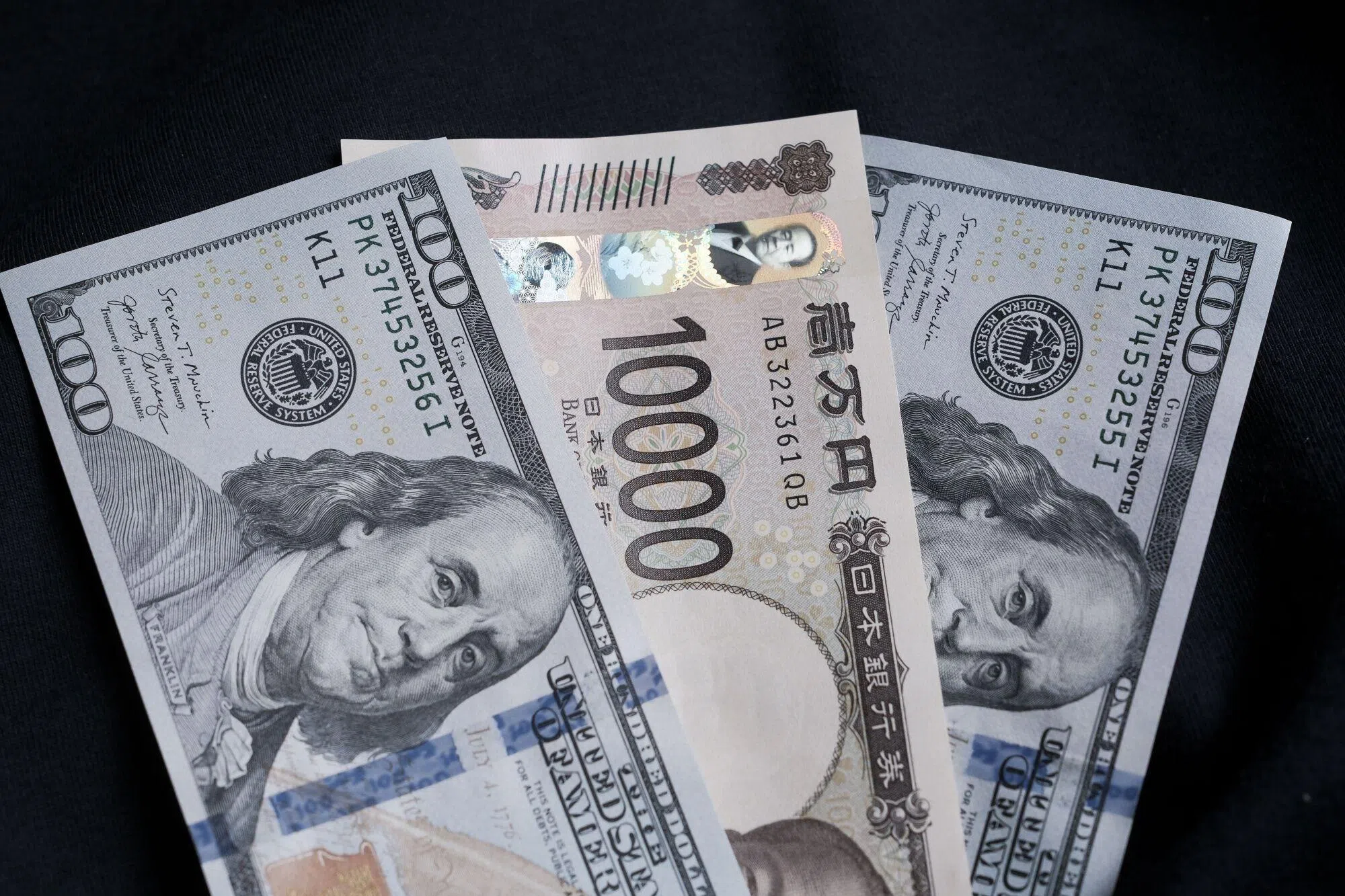THE US dollar fell against the yen on Friday (Aug 16), and was softer against other peers as traders took profits and investors sifted through economic data to gauge the Federal Reserve’s appetite for interest-rate cuts. Disappointing US housing figures also kept pressure on the dollar, helping it shed some of the lift it got a day earlier from data showing inflation trending down and consumer resilience.
US single-family homebuilding fell in July as higher mortgage rates and house prices kept prospective buyers on the sidelines, suggesting the market remained depressed at the start of the third quarter.
The dollar fell 1.04 per cent against the Japanese yen to 147.75, having touched a two-week high of 149.40 in the prior session. Still, the yen looked on course for its biggest weekly decline since June after US economic data eased fears of a recession and supported bets of gradual rate cuts.
“The overall tone in the FX market today is best characterised as ‘corrective’. After a big rally on the strong US consumer data on Thursday, the US dollar is giving back some of its gains as traders take profits ahead of the weekend,” said Matt Weller, head of market research at StoneX.
“The yen is the strongest major currency today, though still the weakest on the week, as traders rein in expectations for interest-rate cuts among other major central banks.”
Risk-sensitive currencies such as sterling were firm as the improved economic outlook spurred a rally in equities.
BT in your inbox
Start and end each day with the latest news stories and analyses delivered straight to your inbox.
Latest data showed the number of Americans filing new applications for unemployment benefits dropped to a one month-low last week, while US retail sales increased by the most in 18 months in July, dashing expectations that the Fed could cut interest rates by 50 basis points (bps) next month.
Odds for such a move is now 25.5 per cent, according to the CME Group’s FedWatch Tool. The dollar index fell 0.48 per cent to 102.54.
Traders are now looking to Fed chair Jerome Powell’s Jackson Hole upcoming speech, but Weller does not expect any pre-commitment to either a 25 bps or 50bps cut next month.
With losses of about 1 per cent, the yen was on track for its biggest weekly drop in almost two months. The yen surged to as strong as 141.675 yen per dollar on Aug 5 as the Bank of Japan’s (BOJ) surprise rate hike, combined with the flare-up in US recession worries, sparked an aggressive unwinding of yen-financed carry trades.
Some calm was restored after BOJ deputy governor Shinichi Uchida said the BOJ would not hike rates when markets are volatile, and there are signs traders have been rebuilding short positions. Data shows plenty of flows are happening, and Japanese investors ploughed the most money into long-term overseas bonds in 12 weeks in the week to Aug 10, while foreigners were net buyers of short-term Japanese debt after eight straight weeks of selling.
Overseas investors also snapped up about US$3.5 billion in Japanese shares, reversing three consecutive weeks of net selling.
Sterling rose 0.6 per cent to US$1.2931 – its highest since Jul 25 – after data showed British retail sales edged up in July, boosted in part by extra spending during the Euro 2024 football tournament.The pound was on track for a 1.2 per cent weekly rise, its best performance in more than a month. The euro added 0.36 per cent to US$1.1012. It touched its highest level since Jan 3 earlier in the week, helped by drop in the dollar after soft data.
“We would use any US dollar dips to add to longs heading into the fall,” said Daniel Tobon, head of G10 FX strategy at Citi Research. “We would be looking to sell euro-USD on rallies through 1.10, especially as growth momentum in Europe could be stalling and the euro could be vulnerable into US elections on tariff risks.” REUTERS






